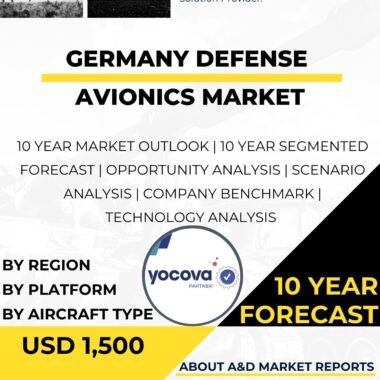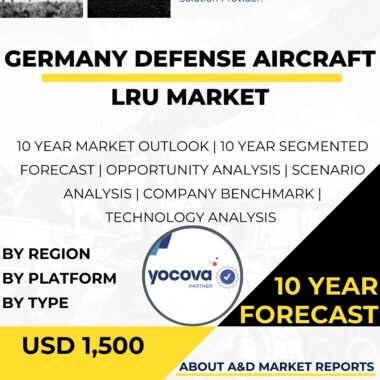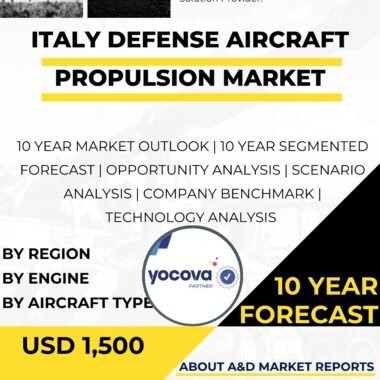Description
The South Korea defense heads-up display (HUD) market is a crucial segment of the country’s defense industry, offering advanced technologies that enhance situational awareness, improve pilot performance, and provide a decisive edge on the battlefield. Heads-up displays are integrated into various defense platforms, including fighter jets, helicopters, armored vehicles, and naval vessels. South Korea’s focus on indigenous development, strategic partnerships, and technological innovation has positioned the country as a key player in the global defense HUD market.
Heads-up displays serve as critical interface systems that project essential flight and combat information directly onto the pilot’s field of view. This allows pilots to maintain focus on their surroundings while simultaneously accessing critical data, such as flight parameters, targeting information, and sensor feeds. The advantage of HUDs lies in their ability to reduce workload and enhance response times, making them indispensable in modern warfare.
South Korea’s drive for indigenous development has been a defining characteristic of its defense industry, and the HUD market is no exception. The country’s defense companies, such as Hanwha Systems and LIG Nex1, have made significant progress in developing advanced HUD technologies for various platforms. The development of indigenous HUD systems not only reduces reliance on foreign suppliers but also fosters growth in the domestic defense industry, generating economic benefits and promoting self-sufficiency in critical defense capabilities.
One of the key areas where South Korea has demonstrated its prowess in the defense HUD market is in the development of fighter jet HUDs. The KAI KF-21 Boramae, South Korea’s indigenously developed fifth-generation fighter aircraft, is equipped with an advanced HUD system. This HUD provides the pilot with crucial flight data, weapon system information, and tactical data, enhancing their situational awareness and combat effectiveness.
Additionally, South Korea has also pursued strategic partnerships with international defense companies to enhance its defense HUD capabilities. Collaborations with established manufacturers have allowed South Korea to access cutting-edge technologies and integrate them into its own systems. These partnerships have provided South Korea with a broader range of HUD solutions, ensuring that its defense platforms remain at the forefront of technology.
South Korea’s commitment to technological innovation has been instrumental in the continuous improvement of its defense HUD systems. The integration of advanced features, such as augmented reality (AR) overlays and sensor fusion, has further enhanced the capabilities of these systems. AR overlays can superimpose additional information on the pilot’s HUD display, such as terrain data, friendly forces, and threat indications, offering a comprehensive view of the operational environment.
In addition to fighter jets, South Korea has applied HUD technology to other defense platforms, including helicopters and armored vehicles. For instance, the Korean Aerospace Industries (KAI) Surion, a domestically produced utility helicopter, is equipped with an advanced HUD system that provides critical flight data and mission-specific information to the crew.
Naval vessels are another area where South Korea has adopted HUD technology to enhance the situational awareness and combat capabilities of its naval personnel. Heads-up displays integrated into the bridge or combat information center offer real-time data on ship operations, navigation, and combat situations, enabling faster decision-making and improving overall naval operations.
South Korea’s defense HUD market is not limited to its domestic requirements. The country actively seeks opportunities to export its HUD systems to other countries, leveraging its advanced technologies and competitive pricing. Successful exports of defense HUDs have expanded South Korea’s influence in the global defense market and contributed to the growth of its defense industry.
To ensure optimal utilization and effectiveness of defense HUDs, South Korea emphasizes rigorous training and skill development for its military personnel. Training programs are designed to familiarize operators with the HUD’s features and capabilities, enhancing their operational proficiency and adaptability in various scenarios.
In conclusion, the South Korea defense heads-up display market plays a vital role in enhancing the country’s defense capabilities. Indigenous development, strategic partnerships, and technological innovation have allowed South Korea to create advanced HUD systems for various defense platforms, including fighter jets, helicopters, armored vehicles, and naval vessels. The focus on improving situational awareness, reducing pilot workload, and providing critical information in real-time ensures that South Korea’s defense forces maintain their readiness and effectiveness in countering potential threats. As the defense industry continues to evolve, South Korea’s dedication to advancing its defense HUD technology will remain essential in safeguarding its national security and maintaining its position as a key player in the global defense market.




